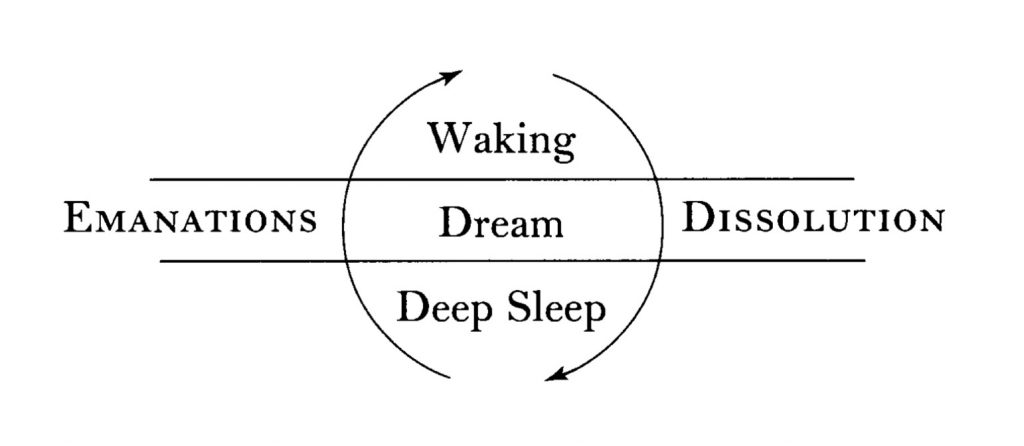Above Image Source: https://www.artpeoplegallery.com/cosmogony-of-dogons/

Part II, “The Cosmogonic Cycle,” unrolls the great vision of the creation and destruction of the world which is vouchsafed as revelation to the successful hero. Chapter I, Emanations, treats of the coming of the forms of the universe out of the void. Chapter II, The Virgin Birth, is a review of the creative and redemptive roles of the female power, first on a cosmic scale as the Mother of the Universe, then again on the human plane as the Mother of the Hero. Chapter III, Transformations of the Hero, traces the course of the legendary history of the human race through its typical stages, the hero appearing on the scene in various forms according to the changing needs of the race. And Chapter IV, Dissolutions, tells of the foretold end, first of the hero, then of the manifested world.
The Cosmogonic cycle is presented with astonishing consistency in the sacred writings of all the continents, and it gives to the adventure of the hero a new and interesting turn; for now it appears that the perilous journey was a labor not of attainment but of reattainment, not discovery but rediscovery. The godly powers sought and dangerously won are revealed to have been within the heart of the hero all the time. He is “the king’s son” who has come to know who he is and therewith has entered into the exercise of his proper power—“God’s son,” who has learned to know how much that title means. From this point of view the hero is symbolical of that divine creative and redemptive image which is hidden within us all, only waiting to be known and rendered into life.
“For the One who has become many, remains the One undivided, but each part is all of Christ,” we read in the writings of Saint Symeon the younger (949-1022 A.D.). “I saw Him in my house,” the saint goes on. “Among all those everyday things He appeared unexpectedly and became unutterably united and merged with me, and leaped over to me without anything in be tween, as fire to iron, as the light to glass. And He made me like fire and like light. And I became that which I saw before and be held from afar. I do not know how to relate this miracle to you…. I am man by nature, and God by the grace of God.”
A comparable vision is described in the apocryphal Gospel of Eve. “I stood on a loftly mountain and saw a gigantic man and another a dwarf; and I heard as it were a voice of thunder, and drew nigh for to hear; and He spake unto me and said: I am thou, and thou art I; and wheresoever thou mayest be I am there. In all am I scattered, and whensoever thou wiliest, thou gatherest Me; and gathering Me, thou gatherest Thyself.”
The two—the hero and his ultimate god, the seeker and the found—are thus understood as the outside and inside of a single, self-mirrored mystery, which is identical with the mystery of the manifest world. The great deed of the supreme hero is to come to the knowledge of this unity in multiplicity and then to make it known.
From The Hero with a Thousand Faces, Prologue, section 3 (pp. 30-31)
